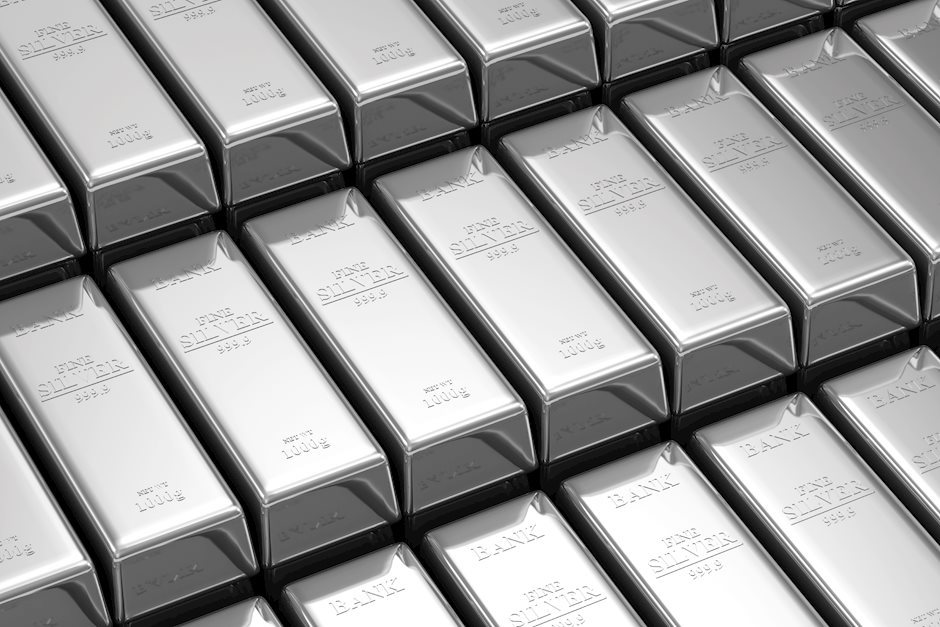Silver Price Forecast: XAG/USD remains above $29.00 due to Fed’s expectations of rate cuts
- Silver price may extend its winning streak as recent inflation raises the odds of the Fed’s rate cuts.
- US PCE Price Index increased by 2.6% YoY in May, down from 2.7% in April.
- Silver may limit its upside due to demand uncertainties in China, the largest consumer of grey metal.

Silver price (XAG/USD) remains stable with a positive outlook, it may extend its winning streak for the third consecutive day. The XAG/USD pair trades around $29.10 per troy ounce during early European hours on Monday. The non-yielding asset gains ground as investors assess the Federal Reserve's (Fed) monetary policy outlook amid signs of cooling US inflation.
On Friday, the US Bureau of Economic Analysis reported that US inflation had eased to its lowest annual rate in over three years. The US Personal Consumption Expenditures (PCE) Price Index increased by 2.6% year-over-year in May, down from 2.7% in April, meeting market expectations. Meanwhile, Core PCE inflation also rose by 2.6% year-over-year, down from April’s 2.8% reading, aligning with estimates.
On Friday, Federal Reserve Bank of San Francisco President Mary Daly stated that while monetary policy is proving effective, it is still too early to determine when it will be appropriate to cut interest rates. Daly remarked, "If inflation stays sticky or comes down slowly, rates would need to be higher for longer," according to Reuters.
Demand uncertainties in China, the largest consumer of Silver, also pressured prices after an official report indicated a second consecutive month of manufacturing downturn in June. China's National Bureau of Statistics (NBS) reported that the Manufacturing PMI remained at 49.5 in June, consistent with market forecasts and marking the fourth instance of contraction.
Conversely, a private survey indicated the fastest growth in the manufacturing sector in three years. The Caixin Manufacturing PMI for China rose to 51.8 in June, defying expectations of a decline to 51.2 from May’s 51.7.
Silver FAQs
Silver is a precious metal highly traded among investors. It has been historically used as a store of value and a medium of exchange. Although less popular than Gold, traders may turn to Silver to diversify their investment portfolio, for its intrinsic value or as a potential hedge during high-inflation periods. Investors can buy physical Silver, in coins or in bars, or trade it through vehicles such as Exchange Traded Funds, which track its price on international markets.
Silver prices can move due to a wide range of factors. Geopolitical instability or fears of a deep recession can make Silver price escalate due to its safe-haven status, although to a lesser extent than Gold's. As a yieldless asset, Silver tends to rise with lower interest rates. Its moves also depend on how the US Dollar (USD) behaves as the asset is priced in dollars (XAG/USD). A strong Dollar tends to keep the price of Silver at bay, whereas a weaker Dollar is likely to propel prices up. Other factors such as investment demand, mining supply – Silver is much more abundant than Gold – and recycling rates can also affect prices.
Silver is widely used in industry, particularly in sectors such as electronics or solar energy, as it has one of the highest electric conductivity of all metals – more than Copper and Gold. A surge in demand can increase prices, while a decline tends to lower them. Dynamics in the US, Chinese and Indian economies can also contribute to price swings: for the US and particularly China, their big industrial sectors use Silver in various processes; in India, consumers’ demand for the precious metal for jewellery also plays a key role in setting prices.
Silver prices tend to follow Gold's moves. When Gold prices rise, Silver typically follows suit, as their status as safe-haven assets is similar. The Gold/Silver ratio, which shows the number of ounces of Silver needed to equal the value of one ounce of Gold, may help to determine the relative valuation between both metals. Some investors may consider a high ratio as an indicator that Silver is undervalued, or Gold is overvalued. On the contrary, a low ratio might suggest that Gold is undervalued relative to Silver.
Author

Akhtar Faruqui
FXStreet
Akhtar Faruqui is a Forex Analyst based in New Delhi, India. With a keen eye for market trends and a passion for dissecting complex financial dynamics, he is dedicated to delivering accurate and insightful Forex news and analysis.
















